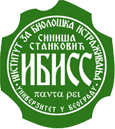PhotoSCLART will deliver photoresponsive sclareol- (SCL) and artemisinin (ART)-based hybrid compounds with a potential for application in cancer diagnostics and therapy (theranostic approach). Hard-to-treat cancers with multidrug-resistant (MDR) cancer cell populations represent a challenge for treatment. In addition, there is a lack of tools for their diagnosis. Natural products or nature-inspired compounds account for 50% of approved anticancer drugs. Therefore, PhotoSCLART will create a chemical library of natural product derivatives (NPDs) through derivatization of SCL and ART which will be screened using pairs of human-sensitive and MDR cancer cell lines as well as corresponding normal cell lines to determine the most potent candidates. Compounds with optimal characteristics (selectivity toward cancer cells, preferably MDR cancer cells) will be transformed into Dye−NPD conjugates. Our aim is to obtain photoresponsive molecules that will undergo NPD release selectively in cancer cells or MDR cancer cells when irradiated with visible-light wavelengths that are not harmful to cells and tissue. In such a way, PhotoSCLART will provide a unique tool for cancer theranostics based on natural products. PhotoSCLART will also strengthen the professional capacities of young researchers involved in the project and foster collaboration between basic research and pharmaceutical companies/accelerators. The multidisciplinary knowledge gained within the project that integrates organic chemistry, medicinal chemistry, cancer research, molecular biology, and drug development will have a strong impact on the scientific community. Ultimately, our aim is to show the applicative potential of our research and the benefits offered by photoresponsive NPDs as anticancer theranostic agents, particularly in eradicating MDR cancer cells.
Period: 2023-2026.
Project Website:
https://www.chem.bg.ac.rs/projekti/195/index-en.html
Project coordinator:
Prof. Dr. Igor Opsenica, Faculty of Chemistry, University of Belgrade
Team members from IBISS:
Dr. Milica Pešić, Department of Neurobiology
Dr. Ana Podolski-Renić, Department of Neurobiology
Ana Stepanović, Department of Neurobiology
Ema Lupšić, Department of Neurobiology
External advisors:
Dr. Života Selaković, Faculty of Chemistry, University of Belgrade
Dr. Andrea Nikolić, Faculty of Chemistry, University of Belgrade
Pavle Stojković, Faculty of Chemistry, University of Belgrade
Dr. Ana Andrijević, Innovative Centre, Faculty of Chemistry, University of Belgrade
Dr. Milica Selaković, Innovative Centre, Faculty of Chemistry, University of Belgrade
Dr. Vladimir Ajdačić, Innovative Centre, Faculty of Chemistry, University of Belgrade
Ljiljana Koračak, Innovative Centre, Faculty of Chemistry, University of Belgrade
Dr. Nataša Terzić-Jovanović, Institute of Chemistry, Technology and Metallurgy, University of Belgrade
Dr. Miroslav Novaković, Institute of Chemistry, Technology and Metallurgy, University of Belgrade




